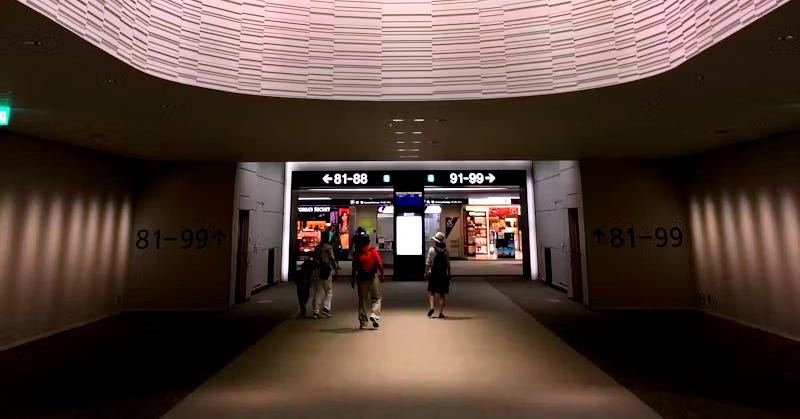A few minutes ago, at Frankfurt Airport, a toddler darted towards me, giggling wildly as he tried to block my path. His joy was infectious, and he briefly pulled me into his world.
Then I glanced up to find his family and saw what could have been a museum exhibit about the 2020s: his entire family - parents and two siblings - locked in that distinctive forward-tilt of people absorbed in their phones.
This probably sounds like the setup for a bad tweet about the death of human connection, but bear with me.
Before smartphones, airport gates were a peculiar kind of social experiment. Not necessarily better, just… unique. They combined enforced idleness with enforced proximity—a recipe you don’t encounter much elsewhere.
Think about it: churches gather believers, schools sort by age and geography, trains let you escape to another car. But an airport gate? It traps lawyers next to farmers next to students, sometimes for hours. No filters. No exits. Just time and shared space.
When the corporate executive and the college student struck up a conversation in the 1980s, they weren’t just sharing space. They were engaging in a moment engineered by circumstance. The stakes were low; the expected return on breaking social norms was just high enough. With nowhere else to be, curiosity got its chance.
I’ve felt this phenomenon before—most vividly in my boarding school dorm. Night after night, the same twenty faces. Not because I chose them, but because I had no choice.
With zero optionality, you push through the friction of initial awkwardness. You find rhythms, inside jokes, shared habits. Later, in college, surrounded by limitless options, I struggled to recreate that same depth. Too much choice dilutes investment. Constraints, it turns out, do a lot of the heavy lifting in connection.
But let’s be clear: the dorm or the gate wasn’t some natural Eden of human connection. These were highly artificial environments, constructed by necessity. People didn’t connect because it was “innate.” They connected because they were stuck.
And that’s the thing. When we mourn the “loss” of connection, we’re not actually yearning for a return to some fundamental human truth. We’re reacting to the breakdown of one artificial environment and struggling to imagine the next one. There’s no “natural” state of human connection to reclaim.
What we call human nature is really our capacity to build environments that shape who we are—and then outgrow them.
The toddler at the airport isn’t the last vestige of pre-technological humanity. He’s just figuring out the rules of his particular ecosystem—one where screens dominate, but joy still sneaks through.
The common instinct is to romanticize the old constraints, to say, “If only we could bring them back.” But that misses the point. The dormitory friendship machine worked because it was real. The constraints weren’t engineered for connection; they just happened to produce it.
So the real question isn’t, “How do we get back to what we had?” It’s, “What do we build next?”
What kind of constraints do we need to design, not to imitate the past, but to create environments where connection isn’t just possible, but inevitable?
How do we make spaces where people don’t just coexist, but collide meaningfully?
Being human isn’t about returning to nature. It’s about reshaping it, over and over again.
We’re not defined by what we’ve lost. We’re defined by what we’re willing to invent next.




ooh i got a little goosebumps at the end there
Nice Khalid! I recommend Priya Parker’s book The Art of Gathering. It has some cool ideas for how to build meaningful gatherings—constraints being a key part to it